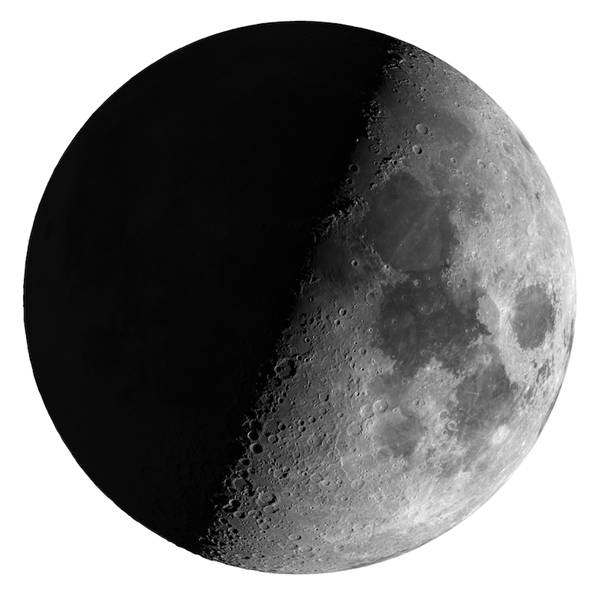The Moon offers lots of visual treats when viewed through a telescope — even a small one. With that in mind, let’s focus on First Quarter. This phase is easy to observe because it rises around noon and sets at midnight (one hour later if daylight saving time is in effect), so it’s visible throughout the evening. If you head outdoors at sunset, just look due south.
Why this phase?
First Quarter falls within the best times for viewing the Moon, when shadows are longer and lunar features stand out in sharp relief. The area where this is most evident lies along the terminator, the line dividing the light and dark portions of the Moon’s surface. At First Quarter, the terminator shows where sunrise is occurring.
Along the terminator, you’ll spot dots of light where mountaintops are high enough to catch sunlight but the surrounding lower terrain is still shrouded in shadow. On the floors of large craters, you can follow “wall shadows” cast by the sides of craters hundreds of feet high. All of these features change in real time, so in just a few hours, the differences can be striking.
Observing tips
For some observers, the First Quarter Moon appears too bright through a telescope. You can deal with this in several ways. You could use a neutral density filter, which is a (carefully made) dark piece of glass that screws into the bottom of an eyepiece. A similar device, a variable polarizing filter, lets you change the amount of light passing through it. Another way you can reduce the Moon’s apparent brilliance is to turn on a white light behind you. The additional light suppresses the eyes’ tendency to adapt to the dark, allowing you to use normal scotopic (daytime) vision, which is of much higher quality than dark-adapted photopic vision. Finally, you can use an aperture mask — a piece of cardboard that covers the front of your scope with a small hole cut in it — to turn your telescope into one of much smaller aperture.
All the features shown in the photos accompanying this story lie along the terminator around First Quarter. If you get a string of clear nights, view these features two or more evenings in a row. You’ll be surprised at how different they appear after 24 hours. Compare what you see with the images.
As practical advice, sit while you observe. Try different eyepieces of increasing magnification until the image starts to deteriorate because of the atmosphere. Note any additional details that high powers make visible.
Remember, when you observe the Moon, there’s nothing you need to do quickly. Take your time and relax. This is easy observing, so have fun.










